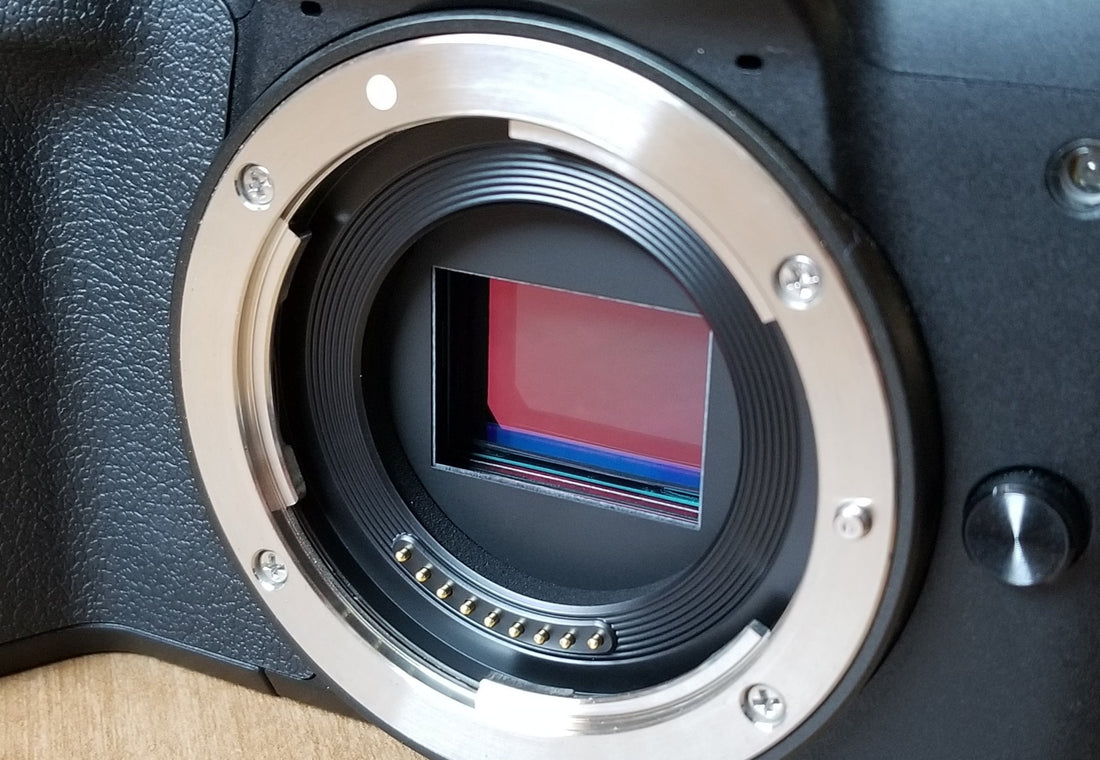
Choosing Between a Mirrorless and Mirrored Camera
Share
Mirrorless vs DSLR: Choosing the Right Camera Type for Your Photography Journey
Finding the right camera is one of the first big decisions new photographers face. Should you start with a classic digital single‑lens reflex (DSLR) camera or jump into the modern world of mirrorless? This guide explains how the two systems work, weighs their pros and cons, and helps you choose the right type for your needs.
How Mirrorless and DSLR Cameras Work
DSLR cameras use a mirror and pentaprism system to reflect light from the lens up into an optical viewfinder. When you press the shutter, the mirror flips up, exposing the sensor to capture the image. This design has been around for decades and is why DSLRs are relatively large and heavy. Mirrorless cameras remove the mirror entirely: light passes straight to the sensor and the preview is shown on an electronic viewfinder (EVF) or rear LCD screen. Eliminating the mirror lets manufacturers reduce size and weight and simplifies the internal mechanism.
Advantages of DSLR Cameras
Despite the rise of mirrorless, DSLRs still have some advantages:
- Optical viewfinder: You see exactly what the lens sees without electronic lag or pixelation. Many photographers appreciate this direct, natural view.
- Long battery life: Because the viewfinder doesn’t require power, DSLRs can capture hundreds or even thousands of shots on a single charge.
- Affordable on the used market: As more photographers switch to mirrorless, you can find capable DSLR bodies and lenses at attractive prices.
- Rugged bodies and lens selection: Legacy systems from Canon and Nikon offer extensive lens line‑ups and rugged, weather‑sealed bodies.
Limitations of DSLR Cameras
The mirrored design also introduces some downsides:
- Bulk and weight: The mirror assembly and pentaprism make DSLRs larger and heavier than comparable mirrorless cameras.
- Mechanical complexity: Moving mirror parts and shutters add vibration (mirror slap) and limit how fast the camera can shoot continuous frames.
- No exposure preview through the viewfinder: With an optical finder you can’t preview exposure or white balance; you must rely on experience and the rear screen.
- Slower innovation: Manufacturers are investing less in new DSLR designs. Most new lenses and bodies are designed for mirrorless systems.
Advantages of Mirrorless Cameras
Mirrorless cameras have rapidly caught up to—and often surpassed—DSLRs in performance. Key benefits include:
- Compact and lightweight: Without a mirror box, mirrorless bodies and lenses can be much smaller and lighter.
- Silent shooting and less vibration: The absence of a flipping mirror means less noise and reduced camera shake, which is helpful for long exposures or quiet environments.
- Faster continuous shooting: Mirrorless cameras can fire rapidly because nothing mechanical blocks the sensor.
- Advanced autofocus: Modern mirrorless cameras use on‑sensor phase‑detect and contrast‑detect autofocus, giving more accurate focus across the frame, better subject tracking and improved eye detection.
- Electronic viewfinder benefits: EVFs show an exposure preview, histogram, focus peaking and other overlays. You can review photos and video in bright sunlight without taking your eye off the viewfinder.
- Access to new lenses and features: Manufacturers are releasing their newest lenses and innovations, such as in‑body image stabilization and computational photography, primarily for mirrorless mounts.
Limitations of Mirrorless Cameras
- EVF lag and quality: Lower‑end mirrorless models and older cameras may have noticeable viewfinder lag or low‑resolution EVFs.
- Battery life: Constantly powering the sensor and EVF drains batteries faster than an optical viewfinder. While battery life has improved, mirrorless cameras still capture fewer shots per charge than comparable DSLRs. For example, the Nikon D850 DSLR is rated for around 1,840 shots per charge, whereas the mirrorless Nikon Z7 is rated for about 420 shots.
- Higher cost: Cutting‑edge mirrorless technology and research raises prices for bodies and lenses, though costs are falling as more models enter the market.
- Potential incompatibility with some flash systems: The autofocus assist beam on certain flashes may not work properly with mirrorless bodies.
Battery Life Comparison
Battery life varies widely between models, but CIPA ratings show that DSLRs typically last much longer than mirrorless equivalents. For instance, Canon’s 5D Mark IV DSLR is rated for around 900 shots per charge, while the mirrorless Canon R5 is rated for about 320. Nikon’s D850 DSLR is rated for roughly 1,840 shots, compared with around 420 for the Nikon Z7. When planning long shoots or travel without easy access to charging, DSLRs provide a tangible advantage.
Future of DSLRs and Mirrorless Cameras
Most major camera manufacturers have shifted research and development toward mirrorless systems, with few new DSLR models announced in recent years. Some companies, such as Pentax, continue to produce DSLRs and emphasize their unique user experience, but the overall industry trend is toward mirrorless innovation. Even so, existing DSLR bodies and lenses remain capable tools for many photographers, especially if you value an optical viewfinder and already own compatible lenses.
Which Should You Choose?
The decision ultimately depends on your priorities:
- If you value a traditional optical viewfinder, long battery life and a wide selection of affordable used lenses: a DSLR could be a sensible choice.
- If you want the smallest, lightest kit with cutting‑edge autofocus, silent shooting, in‑body stabilization and access to the newest lenses: mirrorless cameras are the way forward.
- If budget is a concern: consider buying a used DSLR or an entry‑level mirrorless kit. Renting or borrowing before you buy can help you feel the differences in your hands.
- Consider your photography goals: For sports, wildlife or any high‑speed action, the fast frame rates and smart subject tracking of mirrorless models are compelling. For studio and landscape work where you carry heavy lenses and tripods anyway, a DSLR’s battery life and optical viewfinder might still appeal.
Whichever path you choose, remember that both DSLR and mirrorless cameras are capable of producing stunning images. The best camera is the one that inspires you to get out and shoot.
